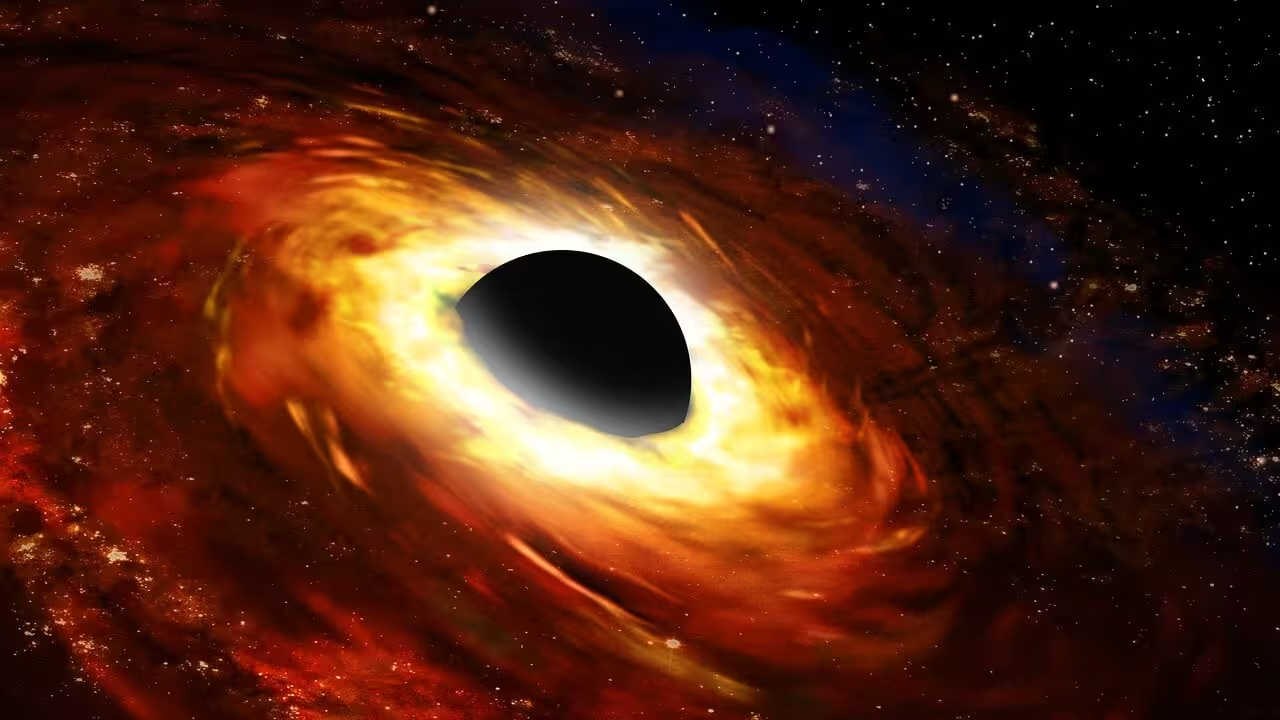5 Minutes
The early Universe may have allowed black holes to grow in ways that no longer happen today. New simulations challenge the idea that mergers or steady, Eddington-limited accretion can explain billion-solar-mass black holes observed when the cosmos was less than a billion years old.
Giant black holes where we didn't expect them
Supermassive black holes sit at the centers of almost every galaxy we can observe. Our own Milky Way hosts a four-million-solar-mass monster about 27,000 light-years away. Other galaxies harbor much larger beasts: the famously imaged black hole in M87 weighs in at roughly 6.5 billion Suns, and the biggest known candidates exceed 40 billion solar masses.
Conventional formation paths—hierarchical galaxy assembly and black hole mergers—work well for producing massive black holes over billions of years. In that framework, smaller seeds grow via accretion and repeated mergers, shaped by the gravitational scaffolding of dark matter and the expansion driven by dark energy. That timeline predicts a simple trend: the farther back we look, the smaller the central black holes should be.
Observations that upset the clock
Then came deep observations with instruments such as the James Webb Space Telescope. Astronomers found quasars powered by billion-solar-mass black holes when the Universe was only a few hundred million years old. These early giants are too massive and too early to be accounted for by slow, merger-driven growth alone.

Illustration of a black hole growing at an extremely fast (super-Eddington) rate
Why is this a problem? The growth of black holes through gas accretion is limited by radiation pressure: as infalling gas heats up it emits photons that push back on incoming material. This limit—the Eddington limit—sets an effective maximum steady growth rate. Under Eddington-limited accretion, even the fastest plausible early growth rates struggle to reach billions of solar masses within a few hundred million years.
Could the rules have been different in the cosmic dark ages?
A new study on arXiv (Wu et al., 2025) uses advanced hydrodynamic simulations to probe black hole growth during the cosmic dark ages: the era after recombination, when atoms formed and before the first widespread starlight reionized the Universe. This epoch is crucial because it’s when the first structures and potential black hole seeds emerged from primordial density fluctuations.
The simulations find regions dense enough that the usual radiation-driven feedback cannot clear out the gas near a nascent black hole. In those pockets, accretion briefly exceeds the classical Eddington limit. This super-Eddington phase allows a seed black hole to grow very rapidly—up to roughly 10,000 solar masses—much faster than in later epochs.
Limits and caveats: a sprint, not a marathon
However, the super-Eddington advantage appears transient. As the simulated black holes reach ~10^4 solar masses, radiation and outflows re-establish a feedback loop that throttles growth back toward Eddington-like rates. Over longer timescales, black holes that accrete persistently at sub-Eddington rates can catch up to those that enjoyed an early super-Eddington sprint. The study uses an apt analogy: Usain Bolt may be the fastest sprinter, but in a long-distance race he’ll be overtaken by a consistent marathoner.

A plot of black hole models shows that super-Eddington growth doesn't lead to long-term mass gains.
In short, super-Eddington accretion in the early Universe helps, but only up to a point. It cannot by itself produce the billion-solar-mass quasars seen at very high redshift.
What this implies: massive seeds or exotic origins
If neither steady Eddington-limited growth nor short-lived super-Eddington bursts nor ordinary mergers can fully explain the early giants, the community is pushed toward alternative ideas. One possibility is that the seeds themselves were unusually massive—formed directly from the collapse of large gas clouds, dense stellar clusters, or even via exotic processes right after inflation. These "heavy seed" scenarios start a black hole at 10^4–10^6 solar masses, drastically reducing the growth needed to reach billion-solar-mass scales.
Other routes under discussion include rapid direct-collapse formation in metal-poor environments, or even primordial black holes seeded by early-universe physics. Each hypothesis has observational consequences: for instance, heavy seeds would alter the expected number of faint quasars at high redshift and change the distribution of early galaxy properties.
Expert Insight
"These simulations are an important step because they model the messy hydrodynamics of early accretion," says Dr. Maya R. Santos, an astrophysicist specializing in black hole formation. "They show super-Eddington episodes can occur, but they also make it clear that we still need either massive initial seeds or new physics to fully explain the earliest quasars."
Looking ahead, future JWST observations, next-generation ground telescopes, and refined simulations will test these scenarios. By mapping faint high-redshift quasars and their host galaxies, astronomers hope to distinguish whether early supermassive black holes are the descendants of rare, massive seeds or the result of more exotic formation channels.
Source: sciencealert
Comments
astroset
Wait so super-Eddington is only a short sprint? If seeds had to be 10^4-10^6 Msun, where'd they come from... any obs signs yet? kinda puzzled


Leave a Comment